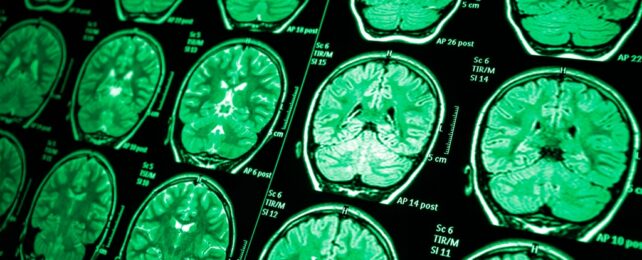Repeated exposure to shock waves in the line of military duty can leave lasting impressions on the brain and may affect its functionality, new research has discovered, even if the changes don't appear in standard brain scans.
Researchers from Harvard Medical School lead an investigation on US special operations forces to get a better idea of how trauma from bomb blasts can increase the risk of traumatic brain injury (TBI) over the long term.
Compared to healthy controls and those with low levels of blast exposure, service members with records of high blast exposure showed noticeable differences in functional connectivity – how different regions of the brain communicate and work together.
Those differences in functional connectivity appeared in tandem with symptoms of higher severity on neuropsychological tests. The tests were configured to look for issues previously linked to TBIs in military personnel.
"We found that service members with more blast exposure had more severe symptoms – including memory problems, emotional difficulties, and signs of post-traumatic stress disorder – and that their brains showed weaker connectivity in key areas," says neuroradiologist Andrea Diociasi.
"In short, repeated trauma seems to weaken the brain's internal communication."
The study looked at 212 service members, both active and retired, who had a history of repetitive blast exposure. They were put through a range of brain imaging scans and psychological evaluations, tailored to assess the health of veterans.
In particular, the researchers searched for evidence of 'invisible' injuries that don't show up on normal magnetic resonance imaging ( MRI) scans. These kinds of brain impacts are often overlooked, making it difficult for researchers to match physical alterations in the brain with mental health problems.
To detect these issues, the MRI analysis was conducted at a higher level of detail and combined with statistical models. The findings were so clear, the team used them to develop a predictive model that could spot a brain exposed to high blast levels with 73 percent accuracy.
"We also noticed certain brain regions were actually larger in more-exposed individuals, which could reflect long-term tissue changes like scarring," says Diociasi.
"These aren't injuries you can always see with the naked eye, but they are real – and now we can start measuring them."
The researchers are confident the approaches used in their study apply to other causes of brain injury, such as in contact sports or as the result of serious accidents at work.
The study also succeeded in providing a more comprehensive map of how trauma leads to brain connectivity changes, and from there to clinical symptoms – potentially opening up routes for improved assessments and treatments.
"The findings reveal that even when the brain looks normal, it might still be carrying hidden signs of trauma – and we now have tools to detect them," says Diociasi.
"That opens the door for earlier detection, better treatment, and a deeper understanding of how repeated trauma affects the brain over time."
The research has been published in Radiology.
